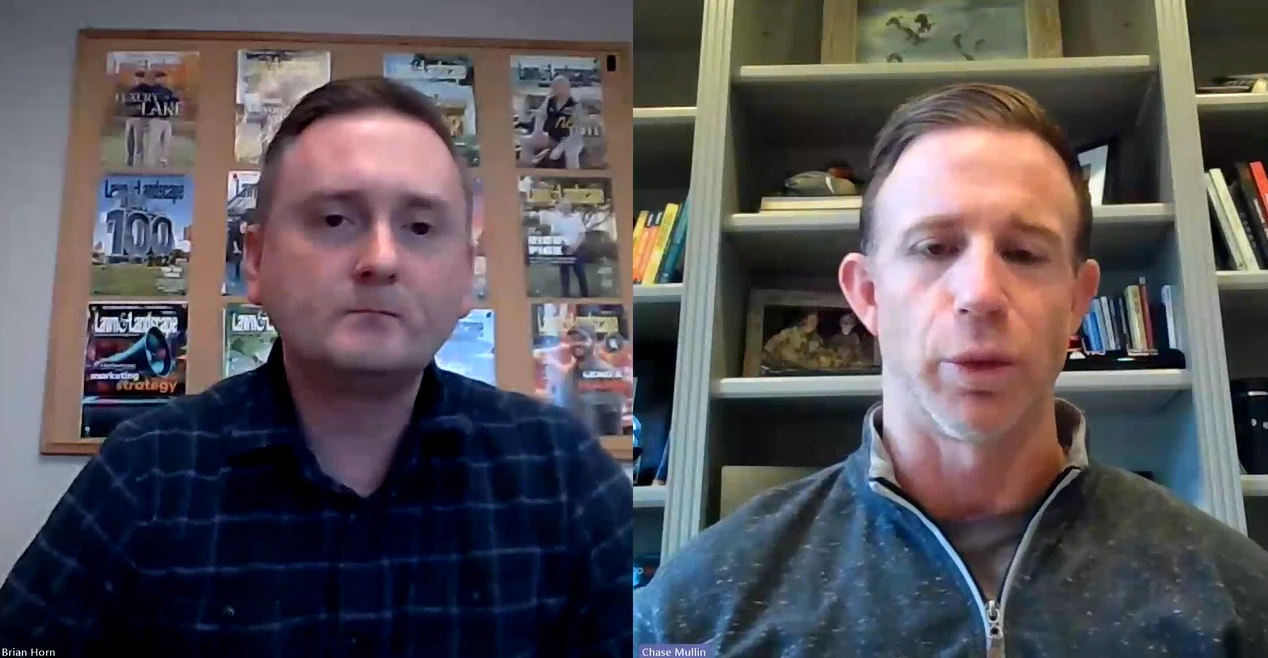It may seem contrary to logic, but if you want to ensure stronger more vibrant turf and healthier trees and shrubs next season, then take action today. Arguably the most important or beneficial lawn application of the year takes place in late fall.
These applications are beneficial to turf, or any plant for that matter, because the plant is reducing its top growth and increasing its root growth. All plants require a firm foundation (the roots) to thrive and grow. The fall is the time of the year when energy from fertilizer is directed to a plant’s root system resulting in increased root growth and overall improved turf health and vigor. Some additional benefits of late-fall feeding include establishing healthy turf before the onset of winter stresses and an overall healthier plant with faster spring green-up capabilities.
So why so much concern about root development in the fall? A strong root system is essential for a healthy turf because the roots are responsible for transporting water and nutrients to the stems and leaves of the plant. Just because the above-ground portion of a plant is dormant does not mean the roots are dormant, too.
Actually, a plant produces more root growth in the fall than during any other time of the year.
GOOD CARBS. Urea will not leach when soil temperatures dip below 50 degrees F. However, root formation continues until the ground is frozen. Supplementing the plant with fertilizer in the fall helps increase root growth through the storage of carbohydrates (energy reserves). Due to less daylight and cooler nights the roots commence storing carbohydrates that were produced during photosynthesis.
DON’T FORGET. Fall is also a great time to prepare your trees and shrubs for next spring. Trees in a landscape environment do not benefit from leaf litter nutrients like those in the forest.
Therefore, supplemental spring and/or fall fertilizers will improve overall tree and shrub health and vigor.
Like all plants, trees and shrubs need light, water, oxygen and nutrients to remain healthy and survive. Although surface applications may provide adequate fertilization, root-zone feeding in the fall allows the nutrients to be immediately absorbed by the tree or shrub. This allows the trees and shrubs to continue growing and absorbing nutrients long after the leaves have fallen and temperatures drop.
Plants that do not receive adequate fertilization will generally become predisposed to insect and disease problems and will retain a generally unhealthy or unthrifty appearance. And, unlike a strong healthy tree, an unhealthy one poses potential hazard issues.
The fall application lays a good foundation for success in the following year’s program. And a healthy plant is more tolerant to drought stress, insect pressure, disease pressure and other stress factors.
J.B. Toorish and Brian Kelley are part of John Deere Landscapes/LESCO’s Tech Services Department. They can be reached at fromthefield@gie.net or at 800/321-5325 ext. 6150 to answer technical questions.
Get curated news on YOUR industry.
Enter your email to receive our newsletters.
Explore the October 2007 Issue
Check out more from this issue and find your next story to read.
Latest from Lawn & Landscape
- Visterra Landscape Group acquires Cleveland-based H&M Landscaping
- SiteOne names Carrothers VP of agronomic business development
- Batman and business
- Ever-changing landscape of SEO
- Fleetio acquires Auto Integrate, raises $450M in Series D funding
- Davey Tree expands in St. Paul, promotes Ostlie to district manager
- Schill Grounds Management taps 3 for senior leadership roles
- HD Hyundai Construction Equipment North America adds to wheeled excavator lineup






